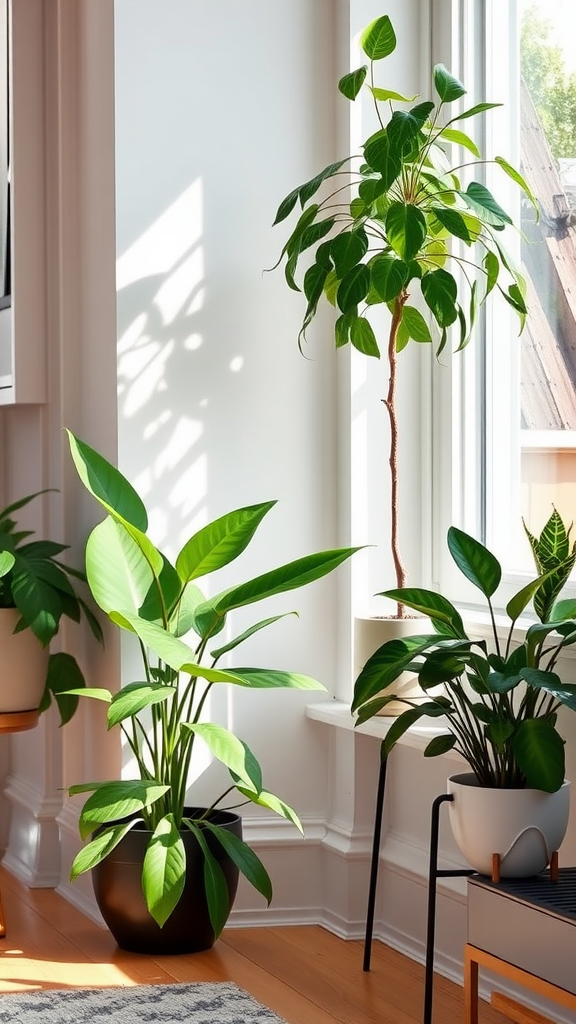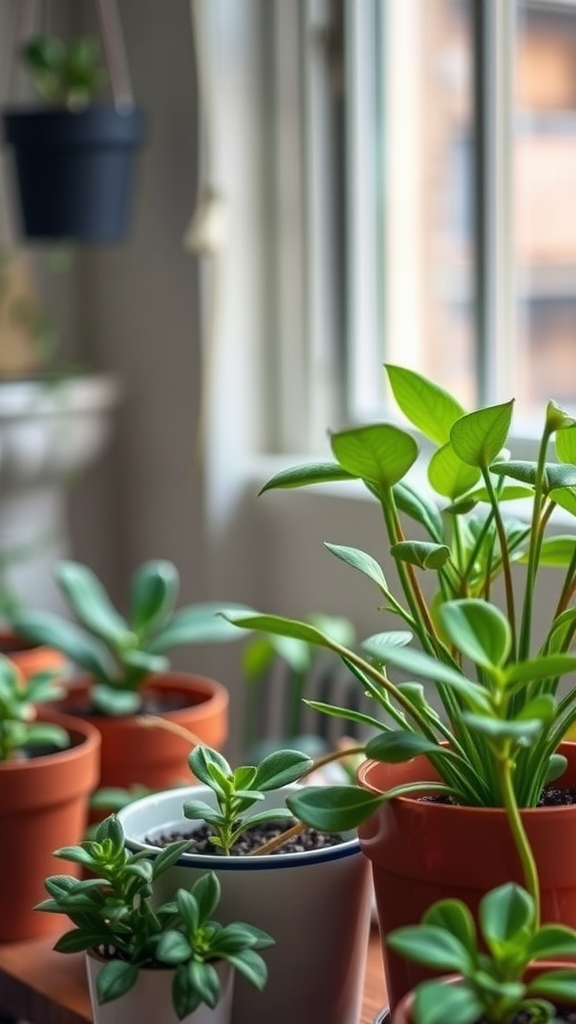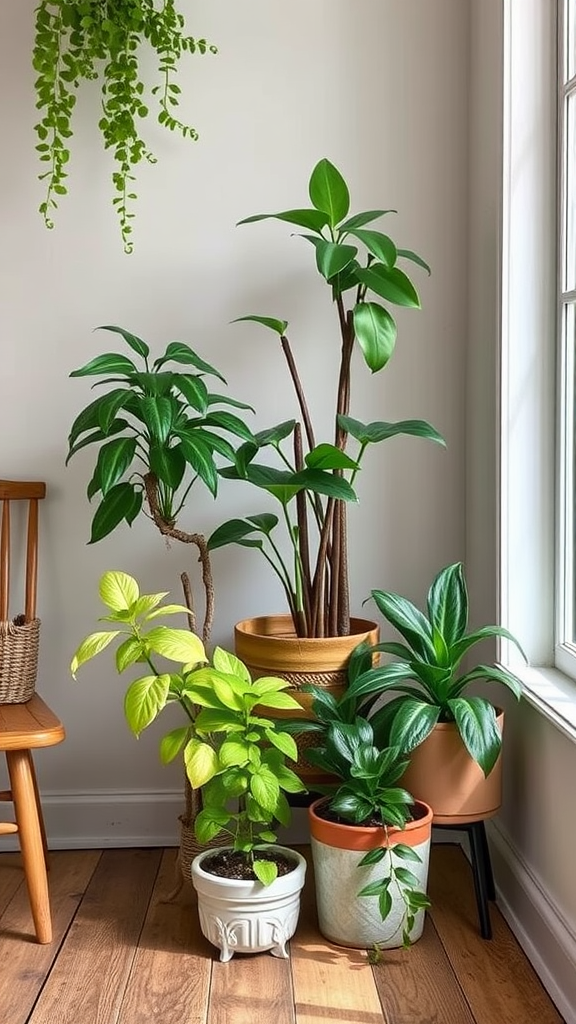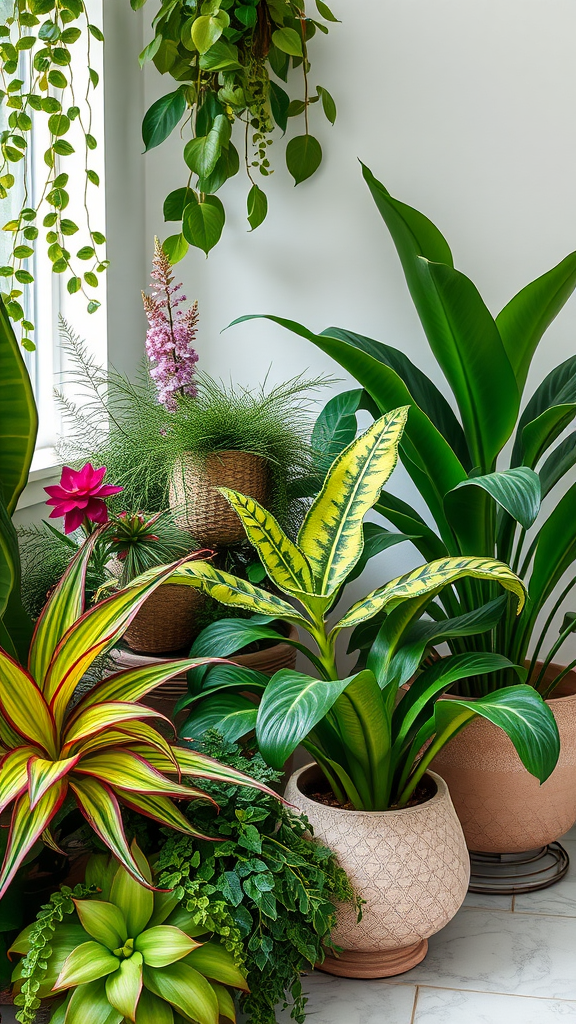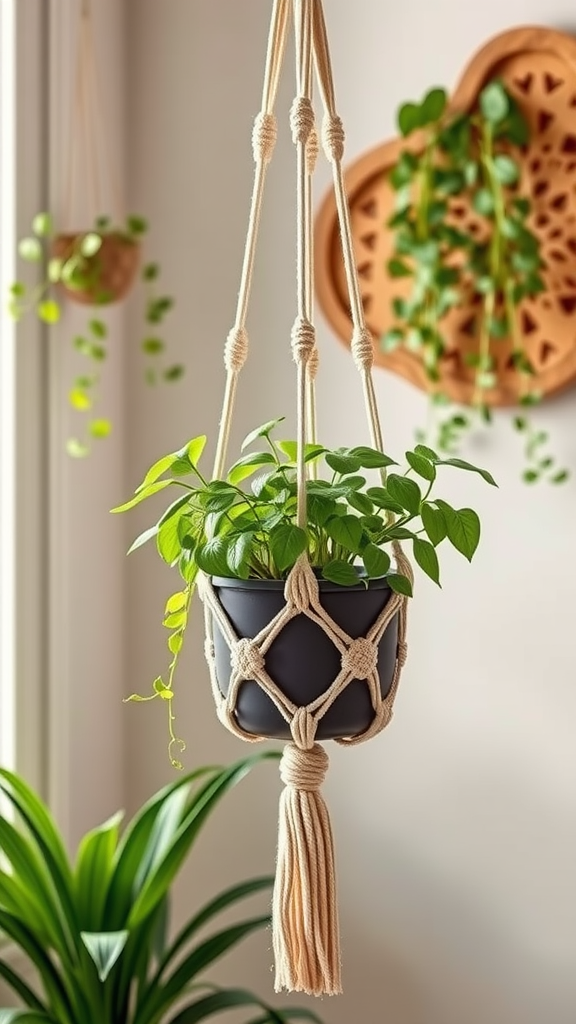Exploring the Benefits of 10 Air-Purifying Plants for a Healthier Home
Creating a healthier home environment is a lot easier than you might think. One great way to enhance your living space is by adding air-purifying plants. Not only do they look beautiful, but they also help improve air quality. Here’s a look at 10 air-purifying plants that you can easily incorporate into your home for a fresher and healthier atmosphere.
1. Spider Plant
This resilient plant is known for its ability to filter out formaldehyde and other pollutants. Spider plants thrive in indirect sunlight and require minimal care, making them ideal for beginners. They also produce “baby” plants that can be propagated easily.
2. Peace Lily
Peace lilies are stunning with their white blooms and glossy leaves. They excel at removing toxins such as ammonia, benzene, and formaldehyde. Place them in low light areas, and remember to keep the soil moist but not soggy. Just be cautious as they can be toxic to pets.
3. Snake Plant
Also known as mother-in-law’s tongue, snake plants are incredibly easy to care for. They can survive in low light and require infrequent watering. Notably, they convert carbon dioxide into oxygen during the night, making them perfect for bedrooms!
4. Bamboo Palm
This plant adds a tropical vibe to your home while filtering out benzene, formaldehyde, and trichloroethylene. Bamboo palms thrive in bright, indirect sunlight and prefer consistently moist soil. Their feathery fronds make them a lovely addition to any room.
5. Aloe Vera
You may already know that aloe vera has healing properties for your skin, but it also purifies your air. It filters out formaldehyde and benzene, common in various household products. Aloe thrives in sunny spots and requires little water, making it a beneficial and practical choice.
6. Ficus Elastica (Rubber Plant)
The rubber plant is not only visually appealing due to its deep green leaves, but it’s also a powerful air purifier. It can absorb formaldehyde and remove toxins from indoor air. This plant prefers bright, indirect sunlight and moist, well-draining soil.
7. Boston Fern
This lush plant works wonders for improving air quality. Boston ferns are great at removing formaldehyde and other toxins. They do best in humid environments, so keep them in bathrooms or kitchens. They love indirect sunlight, and regular misting can help keep them healthy.
8. Dracaena
With various stunning varieties, dracaena plants can remove pollutants while adding character to your home. They are effective against trichloroethylene and formaldehyde. Dracaenas thrive in a well-lit area but can tolerate low light. Their drought-resistant nature makes them low maintenance.
9. Areca Palm
This beautiful plant isn’t just eye-catching; it’s also an excellent humidifier and a natural air purifier. The areca palm efficiently removes toxins like toluene and xylene from the air. It prefers bright, indirect light and moist soil, bringing a slice of nature into your home.
10. Pothos
Pothos plants are often called “devil’s ivy” because they are nearly impossible to kill. They are effective at removing formaldehyde, benzene, and xylene. Pothos prefer bright, indirect light but can also thrive in low-light conditions, adapting well to various environments.
These air-purifying plants into your home can lead to numerous health benefits. They help remove harmful toxins, increase oxygen levels, and even boost your mood. By choosing any of these ten plants, you will not only enhance your living space visually but also contribute to a well-rounded, healthier environment.
Whether you’re an experienced plant parent or just starting out, each of these plants fits different lifestyles and care levels. Remember to place them in areas where they receive the appropriate light and to provide minimal care. By welcoming these green companions into your home, you’ll be supporting your journey toward improved air quality and a healthier life.
How to Care for Your Air-Purifying Plants: Tips for Longevity and Growth
Bringing air-purifying plants into your home not only enhances your space aesthetically but also contributes to a healthier living environment. To ensure your green companions thrive and effectively filter the air, proper care is crucial. Here’s how to look after your air-purifying plants and encourage longevity and growth.
First and foremost, understanding the specific needs of each plant type is key. Different plants require different levels of light, water, and humidity. Here are tips that address their basic care needs:
- Light Requirements: Most air-purifying plants prefer bright, indirect light. However, some, like snake plants and pothos, can tolerate low-light conditions. Always check the light preferences for your particular plant to prevent leaf burn or lack of growth.
- Watering: Overwatering is a common mistake. A good rule of thumb is to water when the top inch of soil feels dry. Ensure pots have drainage holes to avoid standing water, which can lead to root rot.
- Humidity: Many air-purifying plants thrive in higher humidity. If your home is dry, consider misting your plants or using a humidity tray. Plants like the peace lily and Boston fern enjoy a little extra moisture in the air.
- Temperature: Most houseplants do well in temperatures between 65°F and 75°F (18°C and 24°C). Avoid placing plants near drafts or heat sources like radiators.
- Fertilizing: Use a balanced fertilizer every 4 to 6 weeks during the growing season (spring to summer). Be cautious not to over-fertilize, which could harm your plants.
Pruning is another essential aspect of plant care. Regularly trim dead or yellowing leaves to promote healthy growth and improve airflow around the plant. This simple task can boost your plant’s appearance and vitality.
Propagation is an exciting way to expand your collection and share plants with friends. Many air-purifying plants, like spider plants and pothos, are easily propagated in water. Cut a healthy stem and place it in a glass of water; roots should appear in a couple of weeks, ready for transplanting into soil.
Be mindful of pests, a common issue for indoor plants. Regularly checking your plants helps catch infestations early. Use a natural insecticidal soap or neem oil for treatment without harming your plants. Keeping the foliage clean with a damp cloth also helps deter pests and allows the leaves to breathe better.
Consider rotating your pots periodically. This practice ensures that all sides of the plant receive equal light exposure, leading to more uniform growth. You may notice that one side appears lusher than the other if it has been facing the light source too long.
Here’s a list of some popular air-purifying plants and their specific care tips:
- Spider Plant: Thrives in bright, indirect light. Water when the soil is dry to the touch.
- Snake Plant: Tolerates low light and infrequent watering is a plus. Perfect for beginners!
- Pothos: Grows well in various light conditions. Water when the top inch of soil is dry.
- Peace Lily: Enjoys bright, indirect light. Water when leaves start to droop.
- Bamboo Palm: Prefers bright light and consistent moisture. Mist leaves occasionally.
As seasons change, adjust your care routine accordingly. During winter months, your plants may require less water and light. Keep a close eye on their needs and modify care as necessary.
Remember that patience is vital. Plants take time to adjust, especially after a change in their environment. Monitor their progress, and don’t hesitate to experiment with different care techniques until you find the perfect balance for your air-purifying plants.
By following these simple steps, you will create an environment where your air-purifying plants can flourish. Not only will your home look more vibrant, but you’ll also enjoy cleaner air and greater peace of mind. Happy gardening!
Conclusion
Investing in air-purifying plants is one of the simplest and most rewarding ways to enhance your home environment. The ten plants highlighted not only add beauty to your space but also work tirelessly to improve air quality. From the soothing presence of the Peace Lily to the resilient Spider Plant, each variety offers unique benefits that contribute to a healthier living area. By introducing these plants into your home, you create a vibrant atmosphere that promotes well-being for you and your family.
To ensure the longevity and growth of your air-purifying companions, it’s essential to follow care tips specific to each species. Providing the right light conditions, watering routines, and occasional feeding will help them thrive and maximize their air-cleaning properties. Remember to keep an eye out for pests and diseases, as early detection can make all the difference in maintaining healthy plants.
Creating a healthier home starts with the choices you make in your living space. By embracing air-purifying plants, you can enjoy cleaner air, reduced stress, and a more inviting atmosphere. So go ahead—select your favorite plants, get them settled into your home, and experience the positive impact they can have on your life. With proper care, these green friends will flourish, helping you breathe easier and live better. Your journey towards a healthier home begins with just a few simple plants. Happy gardening!

